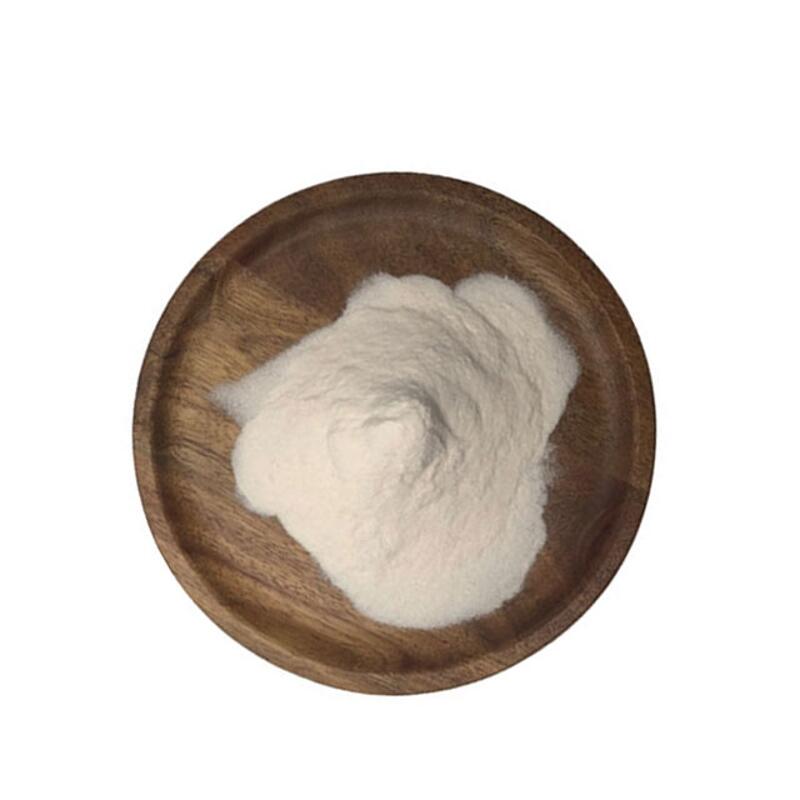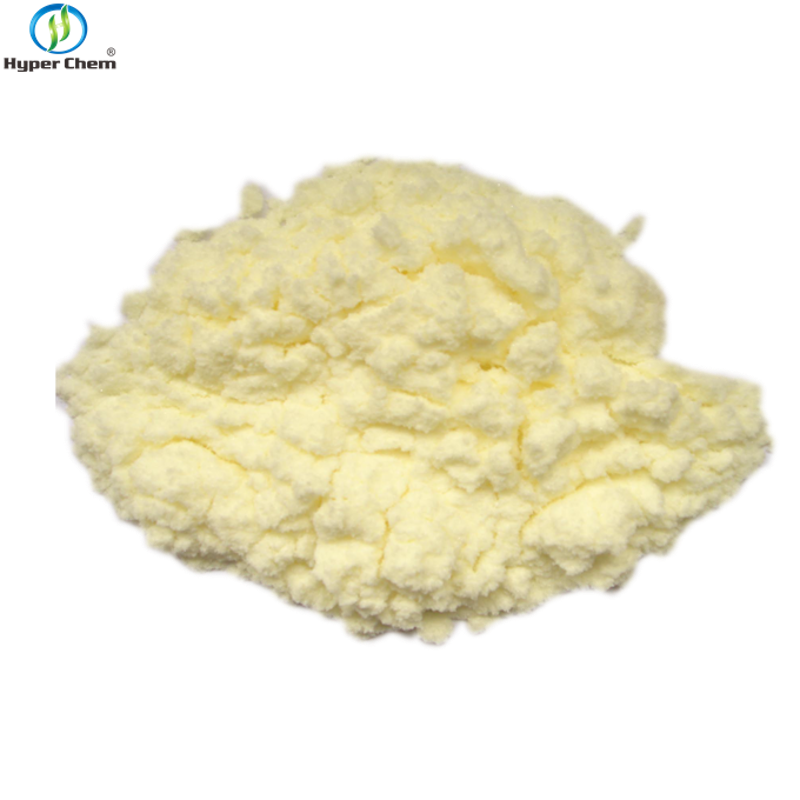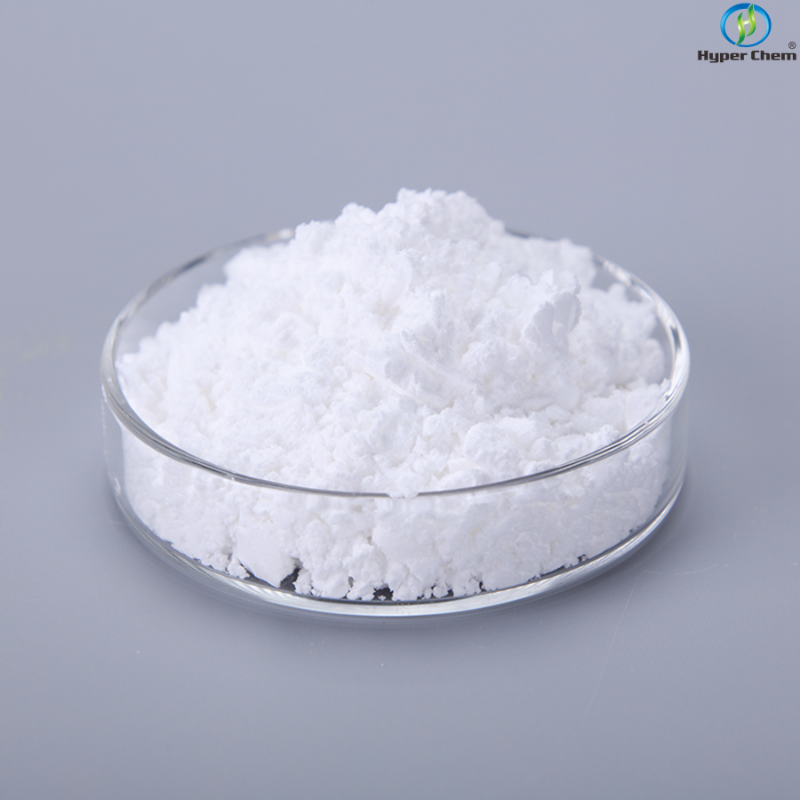-
Categories
-
Pharmaceutical Intermediates
-
Active Pharmaceutical Ingredients
-
Food Additives
- Industrial Coatings
- Agrochemicals
- Dyes and Pigments
- Surfactant
- Flavors and Fragrances
- Chemical Reagents
- Catalyst and Auxiliary
- Natural Products
- Inorganic Chemistry
-
Organic Chemistry
-
Biochemical Engineering
- Analytical Chemistry
-
Cosmetic Ingredient
- Water Treatment Chemical
-
Pharmaceutical Intermediates
Promotion
ECHEMI Mall
Wholesale
Weekly Price
Exhibition
News
-
Trade Service
Introduction: Cardiovascular disease is the leading cause of death in patients with type 2 diabetes (T2DM)1.
The cardiovascular safety of oral hypoglycemic drugs has always been a hot topic of widespread concern by scholars at home and abroad.
Since the FDA in 2008 required all newly marketed hypoglycemic drugs to be evaluated for their cardiovascular safety, more than 20 cardiovascular outcome trials (CVOT) studies have been initiated globally.
Saxagliptin is the first dipeptidyl peptidase 4 inhibitor (DPP-4 inhibitor) to develop CVOT.
What is its cardiovascular safety? Looking back again-the cardiovascular safety of saxagliptin has been confirmed by CVOT that DPP-4 inhibitors are a new target drug developed in recent years for the treatment of T2DM.
It improves endogenous glucagon by inhibiting DPP-4 enzyme activity The level of GLP-1, glucose concentration-dependently promotes the secretion of endogenous insulin, inhibits the secretion of glucagon, and thus achieves the effect of lowering blood sugar2.
Since the advent of DPP-4 inhibitors, a large amount of evidence-based medical evidence has confirmed its good efficacy and safety, especially a number of large-scale CVOT studies have affirmed its cardiovascular safety 3-5.
At present, five DPP-4 inhibitors have been marketed in China: sitagliptin, vildagliptin, saxagliptin, linagliptin and alogliptin.
Among them, saxagliptin is the first DPP-4 inhibitor to develop CVOT.
In 2013, the CVOT study of saxagliptin—SAVOR-TIMI 53 trial results were announced.
The study included a total of 16,942 T2DM patients with a history of cardiovascular events or high cardiovascular risk factors, who were randomized to receive saxagliptin (5mg or 2.
5mg/d) or placebo, and the average follow-up time was 2.
1 years.The primary endpoint of the study is the composite endpoint of cardiovascular death, non-fatal myocardial infarction, and non-fatal ischemic stroke; secondary endpoints are the primary endpoint events and hospitalization due to unstable angina, coronary revascularization, and heart failure Composite endpoint.
The results showed that compared with placebo, the addition of saxagliptin to standard treatment did not increase the risk of major adverse cardiovascular events (MACE, including cardiovascular death, non-fatal myocardial infarction, and non-fatal stroke) (Picture 1) 3.
Figure 1 The SAVOR-TIMI53 study reached the primary endpoint of non-inferiority.
In addition, the researchers conducted a number of subgroup analyses for the SAVOR-TIMI53 trial, exploring the estimated glomerular filtration rate (eGFR), eGFR, and estimating glomerular filtration rate of saxagliptin at different ages.
Cardiovascular safety in patients with baseline glycosylated hemoglobin (HbA1c) levels.
The results found that there was no significant difference in the incidence of primary endpoint events between saxagliptin and placebo in these subgroups 6-8, which further supports the cardiovascular safety of saxagliptin in a broad population.
Doubt-breaking cloud-real-world studies confirm that saxagliptin does not increase the risk of heart failure hospitalization (HHF) saxagliptin's cardiovascular safety exploration road is not smooth sailing.
Earlier, the SAVOR-TIMI 53 trial found that compared with the placebo group, saxagliptin may pose a risk of hospitalization for heart failure (HHF) while not increasing the risk of MACE3.
Further subgroup analysis found that the factors that increase the risk of HFF by saxagliptin mainly include high baseline NTproBNP, a history of heart failure, and chronic kidney disease (CKD)9.
Therefore, these patients should carefully weigh the treatment before using saxagliptin Risks and benefits.
After the SAVOR-TIMI 53 trial results were announced, in order to explore the impact of saxagliptin on the risk of HFF, the FDA conducted a retrospective study using data from its Mini-Sentinel program as a supplement to the SAVOR-TIMI 53 trial.
The study included 78,553 patients treated with saxagliptin and 298,124 patients treated with sitagliptin, and compared with patients treated with pioglitazone, second-generation sulfonylureas, and long-acting insulin.
The average follow-up period was 7-9 month. The results found that compared with other types of hypoglycemic drugs (including pioglitazone, second-generation sulfonylureas and long-acting insulin preparations), the risk of saxagliptin in the treatment of HHF did not increase; and in the past with and without cardiovascular disease/ In patients with heart failure, saxagliptin was not found to be associated with an increased risk of HHF10.
The results of this real-world study provided a powerful answer to Saxagliptin's "heart failure" puzzle.
Look at the current situation-DPP-4 inhibitors occupy an important position in authoritative guidelines at home and abroad.
With the continuous accumulation of evidence-based evidence, DPP-4 inhibitors represented by saxagliptin are increasingly accepted and recognized by clinicians.
The status in the domestic and international guidelines has gradually improved.
Both 2021ADA and 2020CDS recommend DPP-4 inhibitors (such as saxagliptin) as one of the preferred combination drugs for metformin treatment in T2DM patients11-12.
In the International Diabetes Federation (IDF) "Global Guidelines for the Treatment of Type 2 Diabetes in the Elderly"13 and "Guidelines for the Diagnosis and Treatment of Diabetes in the Elderly in China (2021 Edition)"14, DPP-4 inhibitors (such as Saxagliptin) are even more recommended for the elderly One of the first-line hypoglycemic drugs for diabetes (Figure 2).
Figure 2 2021 version of China's elderly diabetes diagnosis and treatment guidelines: elderly T2DM patients with non-insulin treatment pathway diagram At present, saxagliptin tablets have been included in my country's medical insurance category B catalog.
It is worth noting that the saxagliptin tablets (Aoxinyi®) developed by Jiangsu Aosaikang Pharmaceutical Co.
, Ltd.
are the first domestic generic drugs in the patent period of the original drug-related compounds, and it is also the first domestically-made DPP-4 inhibitor drug.
Aoxinyi® has now been included in the "List of Listed Drugs in China" and is deemed to have passed the consistency evaluation.
The advent of Aoxinyi® not only breaks the monopoly of DPP-4 inhibitor drugs by foreign companies, but also provides more medication options for the majority of T2DM patients in my country.
In summary, the SAVOR-TIMI 53 trial and real-world studies have confirmed the good cardiovascular safety of saxagliptin.
With the deepening of research on saxagliptin, its role in the field of hypoglycemia has become more and more important.
I believe that saxagliptin will have a wider application prospect in the treatment of T2DM patients in the future! References: [1]Morrish NJ,et al.
Diabetologia 2001;44(Suppl.
2):S14.
[2]Mulvihill EE, et al.
Endocr Rev, 2014, 35(6): 992-1019.
[3] Scirica BM,et al.
N Engl J Med.
2013 Oct 3;369(14):1317-26.
[4]White WB,et al.
N Engl J Med.
2013 Oct 3;369(14):1327-35 .
[5]Rosenstock J,et al.
JAMA.
2019 Jan 1;321(1):69-79.
[6]Leiter LA,et al.
Diabetes Care.
2015 Jun;38(6):1145-53.
[ 7]Udell JA, et al.
Diabetes Care.
2015;38:696–705.
[8]Cavender MA, et al.
Am J Med.
2016 Mar;129(3):340.
e1-8.
[9]Scirica BM, et al.
Circulation.
2014 Oct 28;130(18):1579-88.
[10]Toh S, et al.
Ann Intern Med.
2016 Jun 7;164(11):705-14.
[11]American Diabetes Association.
Diabetes Care.
2021 Jan;44(Suppl 1):S1-S232.
[12] Chinese Medical Association Diabetes Branch.
Chinese Type 2 Diabetes Prevention and Control Guidelines (2020 Edition)[J].
.
2021.
13(4 ):315-409.
[13].
Global guidelines for the management of type 2 diabetes in the elderly[J].
Diabetes World(Clinical),2014,8(03):109-117.
[14]Guidelines for Diagnosis and Treatment of Diabetes in the Elderly (2021) Annual edition)[J].
Chinese Journal of Diabetes.
2021.
13(1):14-46.
The cardiovascular safety of oral hypoglycemic drugs has always been a hot topic of widespread concern by scholars at home and abroad.
Since the FDA in 2008 required all newly marketed hypoglycemic drugs to be evaluated for their cardiovascular safety, more than 20 cardiovascular outcome trials (CVOT) studies have been initiated globally.
Saxagliptin is the first dipeptidyl peptidase 4 inhibitor (DPP-4 inhibitor) to develop CVOT.
What is its cardiovascular safety? Looking back again-the cardiovascular safety of saxagliptin has been confirmed by CVOT that DPP-4 inhibitors are a new target drug developed in recent years for the treatment of T2DM.
It improves endogenous glucagon by inhibiting DPP-4 enzyme activity The level of GLP-1, glucose concentration-dependently promotes the secretion of endogenous insulin, inhibits the secretion of glucagon, and thus achieves the effect of lowering blood sugar2.
Since the advent of DPP-4 inhibitors, a large amount of evidence-based medical evidence has confirmed its good efficacy and safety, especially a number of large-scale CVOT studies have affirmed its cardiovascular safety 3-5.
At present, five DPP-4 inhibitors have been marketed in China: sitagliptin, vildagliptin, saxagliptin, linagliptin and alogliptin.
Among them, saxagliptin is the first DPP-4 inhibitor to develop CVOT.
In 2013, the CVOT study of saxagliptin—SAVOR-TIMI 53 trial results were announced.
The study included a total of 16,942 T2DM patients with a history of cardiovascular events or high cardiovascular risk factors, who were randomized to receive saxagliptin (5mg or 2.
5mg/d) or placebo, and the average follow-up time was 2.
1 years.The primary endpoint of the study is the composite endpoint of cardiovascular death, non-fatal myocardial infarction, and non-fatal ischemic stroke; secondary endpoints are the primary endpoint events and hospitalization due to unstable angina, coronary revascularization, and heart failure Composite endpoint.
The results showed that compared with placebo, the addition of saxagliptin to standard treatment did not increase the risk of major adverse cardiovascular events (MACE, including cardiovascular death, non-fatal myocardial infarction, and non-fatal stroke) (Picture 1) 3.
Figure 1 The SAVOR-TIMI53 study reached the primary endpoint of non-inferiority.
In addition, the researchers conducted a number of subgroup analyses for the SAVOR-TIMI53 trial, exploring the estimated glomerular filtration rate (eGFR), eGFR, and estimating glomerular filtration rate of saxagliptin at different ages.
Cardiovascular safety in patients with baseline glycosylated hemoglobin (HbA1c) levels.
The results found that there was no significant difference in the incidence of primary endpoint events between saxagliptin and placebo in these subgroups 6-8, which further supports the cardiovascular safety of saxagliptin in a broad population.
Doubt-breaking cloud-real-world studies confirm that saxagliptin does not increase the risk of heart failure hospitalization (HHF) saxagliptin's cardiovascular safety exploration road is not smooth sailing.
Earlier, the SAVOR-TIMI 53 trial found that compared with the placebo group, saxagliptin may pose a risk of hospitalization for heart failure (HHF) while not increasing the risk of MACE3.
Further subgroup analysis found that the factors that increase the risk of HFF by saxagliptin mainly include high baseline NTproBNP, a history of heart failure, and chronic kidney disease (CKD)9.
Therefore, these patients should carefully weigh the treatment before using saxagliptin Risks and benefits.
After the SAVOR-TIMI 53 trial results were announced, in order to explore the impact of saxagliptin on the risk of HFF, the FDA conducted a retrospective study using data from its Mini-Sentinel program as a supplement to the SAVOR-TIMI 53 trial.
The study included 78,553 patients treated with saxagliptin and 298,124 patients treated with sitagliptin, and compared with patients treated with pioglitazone, second-generation sulfonylureas, and long-acting insulin.
The average follow-up period was 7-9 month. The results found that compared with other types of hypoglycemic drugs (including pioglitazone, second-generation sulfonylureas and long-acting insulin preparations), the risk of saxagliptin in the treatment of HHF did not increase; and in the past with and without cardiovascular disease/ In patients with heart failure, saxagliptin was not found to be associated with an increased risk of HHF10.
The results of this real-world study provided a powerful answer to Saxagliptin's "heart failure" puzzle.
Look at the current situation-DPP-4 inhibitors occupy an important position in authoritative guidelines at home and abroad.
With the continuous accumulation of evidence-based evidence, DPP-4 inhibitors represented by saxagliptin are increasingly accepted and recognized by clinicians.
The status in the domestic and international guidelines has gradually improved.
Both 2021ADA and 2020CDS recommend DPP-4 inhibitors (such as saxagliptin) as one of the preferred combination drugs for metformin treatment in T2DM patients11-12.
In the International Diabetes Federation (IDF) "Global Guidelines for the Treatment of Type 2 Diabetes in the Elderly"13 and "Guidelines for the Diagnosis and Treatment of Diabetes in the Elderly in China (2021 Edition)"14, DPP-4 inhibitors (such as Saxagliptin) are even more recommended for the elderly One of the first-line hypoglycemic drugs for diabetes (Figure 2).
Figure 2 2021 version of China's elderly diabetes diagnosis and treatment guidelines: elderly T2DM patients with non-insulin treatment pathway diagram At present, saxagliptin tablets have been included in my country's medical insurance category B catalog.
It is worth noting that the saxagliptin tablets (Aoxinyi®) developed by Jiangsu Aosaikang Pharmaceutical Co.
, Ltd.
are the first domestic generic drugs in the patent period of the original drug-related compounds, and it is also the first domestically-made DPP-4 inhibitor drug.
Aoxinyi® has now been included in the "List of Listed Drugs in China" and is deemed to have passed the consistency evaluation.
The advent of Aoxinyi® not only breaks the monopoly of DPP-4 inhibitor drugs by foreign companies, but also provides more medication options for the majority of T2DM patients in my country.
In summary, the SAVOR-TIMI 53 trial and real-world studies have confirmed the good cardiovascular safety of saxagliptin.
With the deepening of research on saxagliptin, its role in the field of hypoglycemia has become more and more important.
I believe that saxagliptin will have a wider application prospect in the treatment of T2DM patients in the future! References: [1]Morrish NJ,et al.
Diabetologia 2001;44(Suppl.
2):S14.
[2]Mulvihill EE, et al.
Endocr Rev, 2014, 35(6): 992-1019.
[3] Scirica BM,et al.
N Engl J Med.
2013 Oct 3;369(14):1317-26.
[4]White WB,et al.
N Engl J Med.
2013 Oct 3;369(14):1327-35 .
[5]Rosenstock J,et al.
JAMA.
2019 Jan 1;321(1):69-79.
[6]Leiter LA,et al.
Diabetes Care.
2015 Jun;38(6):1145-53.
[ 7]Udell JA, et al.
Diabetes Care.
2015;38:696–705.
[8]Cavender MA, et al.
Am J Med.
2016 Mar;129(3):340.
e1-8.
[9]Scirica BM, et al.
Circulation.
2014 Oct 28;130(18):1579-88.
[10]Toh S, et al.
Ann Intern Med.
2016 Jun 7;164(11):705-14.
[11]American Diabetes Association.
Diabetes Care.
2021 Jan;44(Suppl 1):S1-S232.
[12] Chinese Medical Association Diabetes Branch.
Chinese Type 2 Diabetes Prevention and Control Guidelines (2020 Edition)[J].
.
2021.
13(4 ):315-409.
[13].
Global guidelines for the management of type 2 diabetes in the elderly[J].
Diabetes World(Clinical),2014,8(03):109-117.
[14]Guidelines for Diagnosis and Treatment of Diabetes in the Elderly (2021) Annual edition)[J].
Chinese Journal of Diabetes.
2021.
13(1):14-46.







